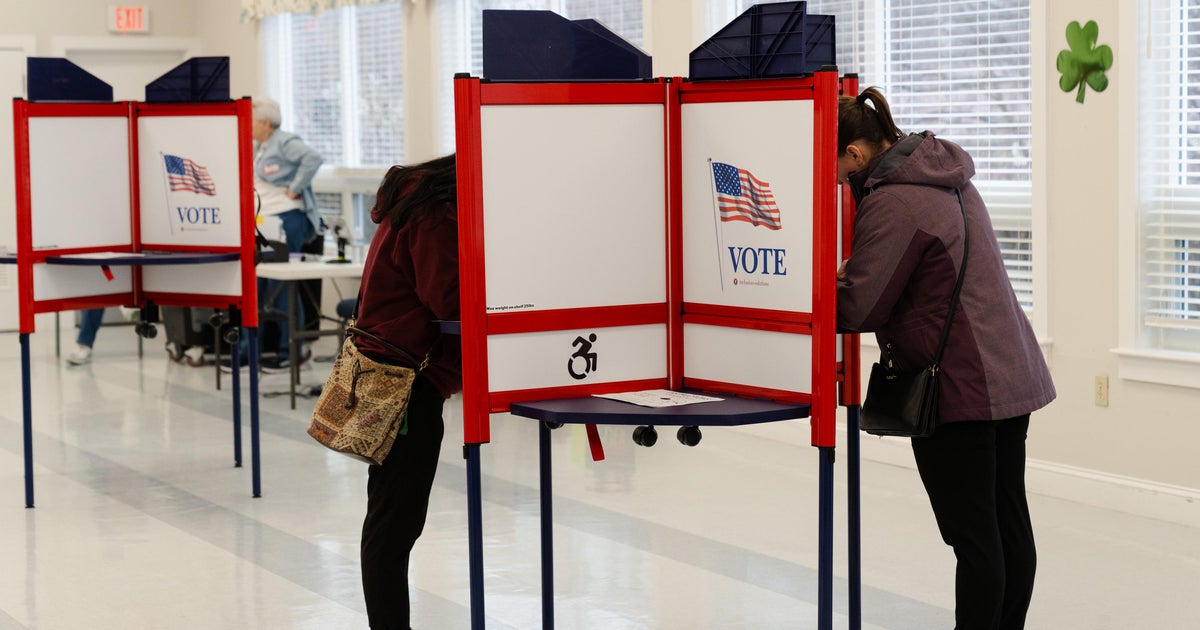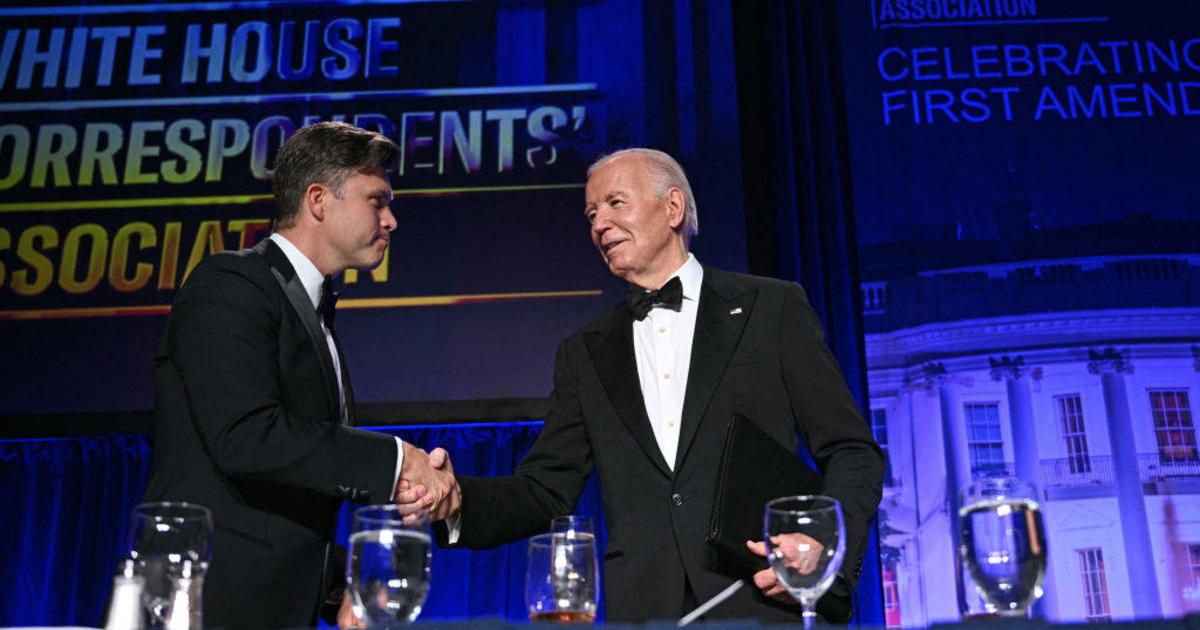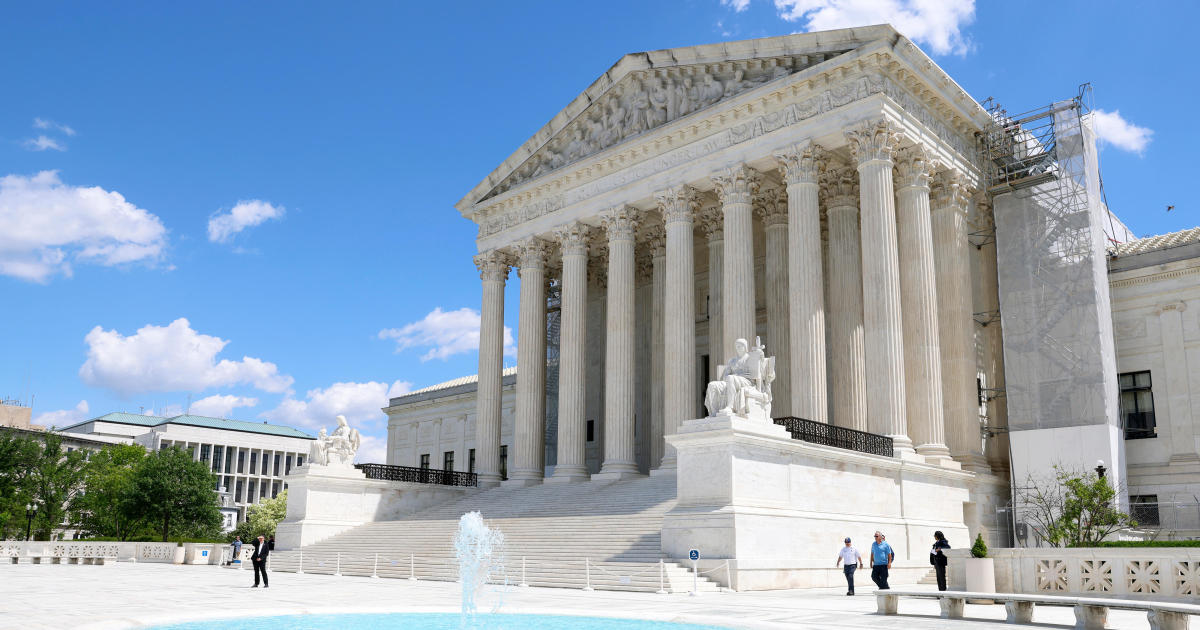How Trump is doing on his campaign promises as he launches his reelection bid
As President Trump kicks off his reelection campaign in Orlando Tuesday night, he's had 29 months to bring his original campaign promises to fruition.
Mr. Trump, who galvanized supporters by pledging to build a wall on the southern border — and make Mexico pay for it — eliminate Obamacare, and bring back manufacturing, among other things, has had two years of a unified Congress to carry out those ideas.
The Democratic National Committee, as CBS News reported, is counter-programming Mr. Trumps' reelection launch with the message claiming Mr. Trump has broken his key campaign promises.
As he makes the case that voters should reelect him to the highest office in the land, here's how Mr. Trump is doing on delivering some of those original pledges.
Build a border wall
"Build the wall" — it's the signature campaign promise that helped propel him to victory, and one of the most common chants at his rallies, even now.
But while the administration has made progress in restoring and replacing existing portions of border wall, very few miles of new wall have been constructed in places they didn't already exist.
Since January 2017, Customs and Border Patrol says that to date, 45.2 miles of border wall have been completed to replace dilapidated designs.
While CBP provided extensive figures on border wall funding and construction — it estimates it has secured enough to fund 201-205 miles of border wall since January 2017 — CBP could not answer straightforward questions about how many miles of wall have been constructed since January 2017 in places where no wall previously existed.
Make Mexico pay for the wall
Mr. Trump originally said Mexico would pay for the wall — "100 percent," as he said.
That hasn't happened. Since his campaign, Mr. Trump has insisted Mexico would fund the wall through better trade deals, touting his U.S.-Mexico-Canada Agreement or U.S.M.C.A.
"MEXICO IS PAYING FOR THE WALL through the many billions of dollars a year that the U.S.A. is saving through the new Trade Deal, the USMCA, that will replace the horrendous NAFTA Trade Deal, which has so badly hurt our Country. Mexico & Canada will also thrive - good for all!" Mr. Trump tweeted in December 2018.
But the future of that trade agreement is shaky in the House, where it needs to pass to become law. That aside, the Trump administration hasn't been able to explain exactly how a better trade agreement would actually fund the border wall.
Get rid of Obamacare
Mr. Trump's pledge to get rid of Obamacare was one of his most frequent on the campaign trail.
Thus far, Mr. Trump has failed to comprehensively repeal Obama's signature health care law, a reality he oftentimes still blames on the late Sen. John McCain. The Affordable Care Act is still the law of the land.
He has, however, made significant dents in the law's potency through executive action.
Mr. Trump sometimes claims his administration eliminated the individual mandate, which isn't entirely accurate. The Trump administration eliminated enforcement of the penalty for the individual mandate, effectively rendering it useless.
The Trump administration has also chipped away at other key components of the law to weaken it.
The Centers for Medicare and Medicaid Services (CMS) in April, for instance, finalized a rule that raises premiums for millions who purchased subsidized insurance through the ACA. The administration has also allowed for states to apply for waivers to opt out of coverage requirements under Obamacare.
Defund Planned Parenthood
"I would defund it because of the abortion factor, which they say is 3 percent. I don't know what percentage it is. They say it's 3 percent. But I would defund it, because I'm pro-life," Mr. Trump said in a February 2016 GOP debate in Houston.
This hasn't happened, although the administration has looked for ways to do so.
Republican efforts to end Planned Parenthood funding legislatively have largely fallen short.
Earlier this year the Trump administration released a rule barring clinics that provide abortions from getting federal planning funds under Title X. But that's already facing legal challenges, and a federal judge in April blocked the rule from taking effect for now. The rule would affect Planned Parenthood, which serves many low-income women who benefit from Title X.
Most of Planned Parenthood's federal funding comes from Medicaid reimbursements. Medicaid is the health insurance program for low-income individuals and families.
Federal law — the Hyde Amendment — already prevents federal funding from going towards abortions, except in instances of rape, incest, or to save the life of the mother.
In other words, while the Trump administration has made attempts to curtail funding that ends up at Planned Parenthood funding, it's fallen far short of defunding the organization.
Get rid of Common Core
"We're cutting Common Core. We're getting rid of Common Core. We're bringing education locally," Mr. Trump said at a Detroit debate in March 2016.
But states were not required to adopt Common Core standards -- it's optional. Presently, 41 states and the District of Columbia have adopted the standards. States that have not adopted the standards include Alaska, Nebraska, Texas, Virginia and Puerto Rico.
Repealing Common Core in Congress, it should suffice to say, hasn't happened, and Mr. Trump hasn't made a point of reviving that particular debate.
Avoid taking vacations
"I would not be a president who took vacations. I would not be a president that takes time off," Mr. Trump said in a 2015 interview.
But the real estate mogul, who criticized Obama for taking vacations, has taken ample days on what most would consider a vacation. Of course, presidents can work from anywhere, and take their decision-making and phone calls with them.
Mr. Trump has made 24 visits to Mar-a-Lago, totaling all or part of 149 days, according to CBS News White House correspondent Mark Knoller. And Mr. Trump has made 135 visits to Trump-branded golf clubs, totaling all or part of 191 days, by Knoller's count.
At the same point in his presidency, Obama had taken 10 vacation trips totaling all or part of 61 days.
And at the same point in his presidency, George W. Bush had taken 23 visits to his Texas ranch, totaling all or part of 157 days, in addition to four visits to Kennebunkport, Maine, totaling all or part of 15 days.
Rebuild the military
This is a tough one to gauge in some respects because the definition of rebuilding the military could mean many things.
The defense budget has certainly increased under Mr. Trump, although that doesn't necessarily equal a stronger military. The Pentagon failed its first-ever audit released in November 2018, although then-Deputy Defense Secretary Patrick Shanahan said at the time the Pentagon "never expected to pass it."
All branches of the military in 2018 slightly exceeded their goals for enlistment, increasing their enlistment overall, according to the Pentagon.
In October 2016, Mr. Trump said his plan "will build the 350-ship Navy we need." But that doesn't look like it's happening any time soon.
The number of deployable Navy battle force ships is now at 289, up from 275 deployable battle force ships available as of September 2016, according to Navy data.
But it would be virtually impossible to reach that number by 2020, or even 2024, should he win reelection.
The Navy announced a plan to build up its fleet in late 2016, which would mean a 355-ship fleet by the 2030s. But Chief of Naval Operations Adm. John Richardson said in February that the Navy is open to reevaluating whether its plan for that many ships is necessary or sustainable.
But the Pentagon's leadership is in a state of flux. On Tuesday, Mr. Trump tweeted that Shanahan has withdrawn his name from consideration for defense secretary. Instead, Army Secretary Mark Esper will serve as acting defense secretary.
In a nutshell, while there are some indications the Pentagon is beefing up under Mr. Trump, it remains to be seen how much he lives up to that promise.
Cut taxes
The GOP tax plan that passed in December 2017 may still be controversial, but it is a signature campaign promise that the president kept.
The tax plan did lower individual income taxes for roughly 80 percent of Americans, according to the Treasury Department, even though many Americans say they're not feeling the benefits.
Bring back manufacturing jobs
Mr. Trump repeatedly pledged to bring back manufacturing, and manufacturing jobs, to the U.S.
The number of manufacturing jobs in the U.S. was already making a comeback from the steep drop-off of the Great Recession when Mr. Trump took office, according to the Bureau of Labor Statistics. But the total number of manufacturing jobs still hasn't reached pre-Great Recession levels.
In 2018, more new manufacturing jobs were added —284,000 — than in any year in decades.
Of course, it's hard to pin down exactly how much Mr. Trump has to do with the added jobs. And experts warn manufacturing — due to the globalized economy and increasing automation of such work— will never be what it was in the first half of the 20th century.
Bring back coal
Mr. Trump pledged to revive the coal industry and reverse the trend in coal jobs and plants under his predecessor.
The number of people employed by the coal industry has ticked up ever so slightly under Mr. Trump — from roughly 50,800 in January 2017 to roughly 52,600 in January 2019 according to the Bureau of Labor Statistics.
But the number of coal plants in the U.S. is still on the decline. There were 680 coal mines in the U.S. in 2017, a decrease of 30 from 2016, according to the U.S. Energy Information Administration.
For some perspective, the EIA said there were 1,458 coal mines in 2008, meaning more than half of the coal mines operating barely a decade ago no longer are.
From the consumption angle, coal consumption in 2018 was on track to be the lowest in 39 years, according to the EIA.
Eliminate the national debt
In 2016, the president told the Washington Post he would eliminate the then-$18-trillion-dollar national debt over eight years, after eviscerating Obama for blowing up the national debt.
But the debt under Mr. Trump has continued to soar, and it's unclear whether he's willing to take the unpopular steps to change that trajectory. Most fiscal experts say non-discretionary spending — programs like Medicaid, Medicare and Social Security, the largest drivers of the debt — must be slashed in order to reverse the trend. The national debt, which was just shy of $20 trillion when Mr. Trump took office in January 2019, surpassed $22 trillion for the first time ever in February of this year.
In a news conference earlier this year, Mr. Trump admitted he won't prioritize the national debt until the military is rebuilt, essentially pushing off his promise indefinitely.
"The military was depleted," Mr. Trump said in his February news conference in the White House Rose Garden. "And if we don't have a strong military — that hopefully we won't have to use because it's strong — if we don't have a strong military, you don't have to worry about debt; you have bigger problems. So I have to straighten out the military. That's why I did the $700- and $716 billion. But growth will straighten it out."
Mr. Trump's advisers, such as top economists Larry Kudlow, have tried to explain the president meant he would cut debt-to-GDP, although Mr. Trump also hasn't accomplished that, and that was not his original wording.
Also, while the Office of Management of Budget claims that debt under Mr. Trump's budget would fall from 78% of GDP by 2029 to 71%, the Committee for a Responsible Federal Budget estimates that using "more realistic assumptions on economic growth," that debt would, in fact, go up to 87% of GDP. The group, a budget watchdog, praised the Trump budget's proposals on slowing the growth of health care costs and reforming some spending programs but said that the budget is "riddled with gimmicks," like hiding the cost of increased defense spending and depending on overly optimistic economic growth assumptions.



